The Best Quentin Tarantino Movies, Ranked
Next year will be a good year. Quentin Tarantino will take us to Los Angeles circa 1969 in his upcoming new movie, Once Upon a Time in Hollywood. It stars Leonardo DiCaprio and Brad Pitt and transpires around the time of the Manson murders. But before everyone sits themselves in a darkened theater for Tarantino’s next ride, we thought this might be a good time to pause and reflect. To take a look back at the best Quentin Tarantino movies so far, ranking them from pretty dang good to damn near superb.
And yes, all nine movies show up on our list, because each Tarantino movie is among his best. He’s too obsessive, too detailed, too much of a perfectionist to make anything less than great. And though a ranking system requires something to be at the bottom, being at the bottom of this list is better than being at the top of most others.
In nine films, Quentin Tarantino borrowed from, was influenced by, and remixed tropes of movies that crossed the globe and spanned time (with the 70s being where his favorites lie). He changed the face of cinema with explosive displays of violence and vengeance, with near-poetic dialogue, and no shortage of style. He makes undiluted and intense entertainment, the kind of movies that if you ever walk into a room and one is playing, you stop what you’re doing and watch it to the end. So here’s our list. Rewatch your favorites, catch the ones you’ve missed and prepare yourself for the next installment in the Quentin Tarantino-verse.
Image: Miramax

9. Death Proof (2007)
“I’m afraid you’re gonna have to start getting scared immediately.”
Every Tarantino movie is a celebration of how much Tarantino loves movies. Death Proof is his love letter to the 70s exploitation, slasher, and muscle car movies he grew up watching.
Released as a double feature in the B-movie/Grindhouse-style (alongside Robert Rodriguez’s Planet Terror) Death Proof stars Kurt Russell as Stuntman Mike, who employs a tricked out ‘71 Chevy Nova as his weapon of choice to stalk and kill a set of unsuspecting beauties. His next set of victims (which he hunts with a ‘69 Dodge Charger) proves harder to kill.
To make the car chases and stunts as immediate and visceral as possible, Tarantino put himself behind the camera in his first cinematography role. The plan worked and the showdown between Stuntman Mike’s Charger and (real life) stuntwoman Zoe Bell’s Dodge Challenger is classic adrenaline-filled car chase of pure entertainment. – Amazon / iTunes
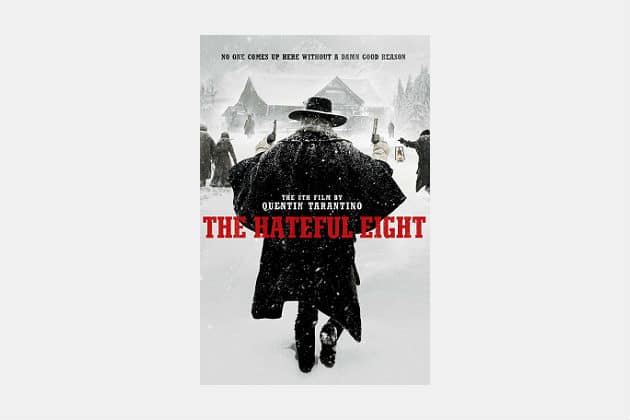
8. The Hateful Eight (2015)
“A bastard’s work is never done.”
A stagecoach, hauling a bounty hunter and his bounty, takes on unexpected passengers at the onset of a Wyoming blizzard. For his most recent film, QT returns not only to the bounty hunting theme and Civil War-era he explored in Django Unchained, he returns once more to the closed-room-full-of-criminals concept of his first film.
The first half of The Hateful Eight lets the eight, hardened occupants of Minnie’s Haberdashery tell each other the stories of who they claim to be. The second half reveals who those characters actually are, as they begin to do what such characters were destined to do. It’s Tarantino at his most bleak, with the unpitying landscape and unrelenting blizzard outside mirroring the unrelenting and inevitable conclusion inside. – Amazon / iTunes

7. Jackie Brown (1997)
“Now that, my friend, is a clear cut case of him or me. And you best believe it ain’t gonna be me.”
This brilliant, intricately plotted follow up to Pulp Fiction is based on Elmore Leonard’s crime fiction novel Rum Punch. It’s funny, full of boldly drawn characters and crackling dialogue and happens to be one of the better crime films made. Yet we put it at number seven — only because as a Tarantino film, it’s the least Tarantino-esque.
For the lead, he called in blaxploitation star Pam Grier to play a stewardess helping to launder money for an arms dealer played by Samuel L. Jackson. When she gets picked up by the ATF she cuts a deal to turn on her employer, but with the help of a bail bondsman (the impeccable Robert Forster) she hopes to come up with a way to double cross everyone and take off with a half a million in cash.
Improved by repeated viewings, Jackie Brown is the director’s only adaptation, and a superb one at that, but he’s at his best when his source material is the limitless confines of his sponge-like brain. – Amazon / iTunes
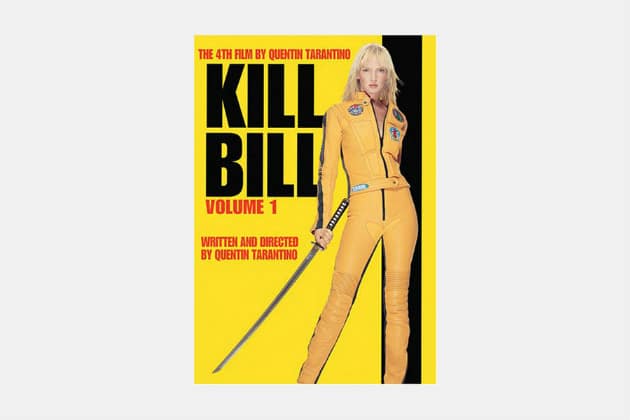
6. Kill Bill: Volume 1 (2003)
“If on your journey, you should encounter God, God will be cut.”
While the two volumes were supposed to come out as a single film, the four-hour run time was deemed too long and thus: two movies. Uma Thurman plays an ex-assassin, left for dead during her wedding rehearsal after trying to leave the assassin’s life for the sake of her unborn child. Kill Bill Volume 1 takes us from hospital room, to suburban house, to the House of Blue Leaves, as The Bride works her way through her Death List, killing those who betrayed her.
With Volume 1, Tarantino shifted into a grander, wider scope than his first three films, drawing in the action of martial arts films, the roving lone hero of spaghetti westerns, even inserting a backstory told in anime. One highlight (among many is) an extended, balletic one-versus-many fight scene against the Yakuza’s Crazy 88s. On its own, Volume 1 is excellent. Paired with Volume 2, its half of the best revenge film ever made. – Amazon / iTunes
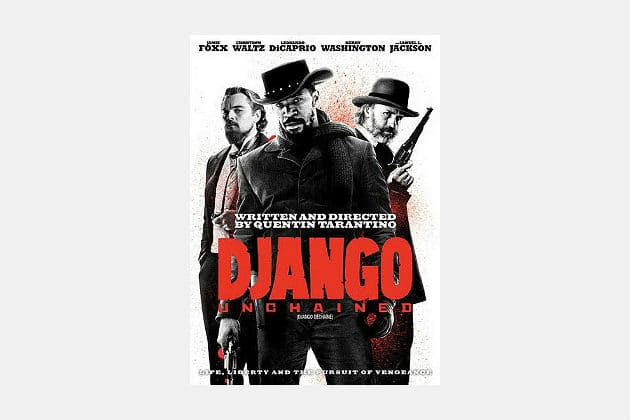
5. Django Unchained (2012)
“I’m sorry…I couldn’t resist.”
Given that it’s set in the South, Quentin Tarantino calls Django Unchained a “southern” as opposed to a western, but the influence of the spaghetti western is clear in this wide ranging tale set two years before the onset of the Civil War. The highest grossing film of Tarantino’s career, the film follows a Django, a freed slave (Jamie Foxx), and Dr. King Schultz, a German bounty hunter (Christoph Waltz), as they attempt to free Django’s wife (Kerry Washington) from a thoroughly oily and despicable plantation owner (Leonardo DiCaprio).
Waltz earned an Academy Award for his role and Tarantino won the Oscar for best original screenplay. In another round (along with his previous Inglourious Basterds) of reason versus evil, and rectifying history, Tarantino’s stylized violence is once again played in the key of satisfying vengeance. – Amazon / iTunes
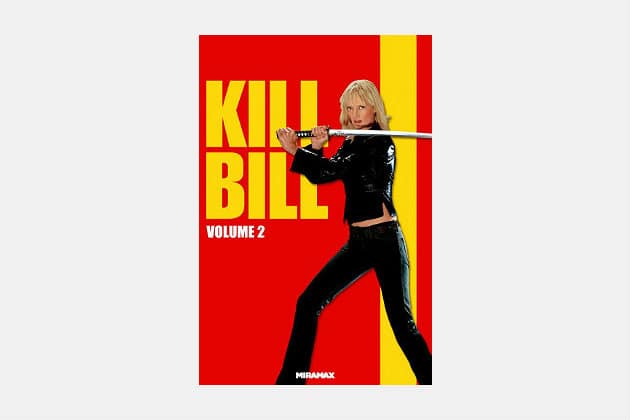
4. Kill Bill: Volume 2 (2004)
“That woman deserves her revenge, and we deserve to die.”
With Kill Bill Volume 2, Tarantino’s revenge odyssey gets heft, soul and dirt (along with the requisite violence) to round out the slickness of Volume 1. Gaps from the first film get filled in: How’d The Bride get so badass? What happened between The Bride and Bill? Why’d Elle Driver lose that eye? The result is a fully formed saga told with style, cinematic flair and relentless energy, making the Kill Bill series one of the best revenge stories ever to hit celluloid.
From her brutal training at the hands of kung fu master Pai Mei to her determined escape from a seemingly inescapable situation (leading to the hardest-earned glass of water in history), The Bride becomes more than an assassin. As she draws inexorably closer to Bill, every betrayal, every lesson learned, every act of revenge, every near-fatal obstacle converges to a single, focused point — or should that be five points? – Amazon / iTunes

3. Inglourious Basterds (2009)
“You just say ‘bingo’.”
When constructing his movies, dialogue has long been one of Quentin Tarantino’s favorite building blocks. With the opening scene of Inglourious Basterds, he proves in twenty gorgeously shot, unnervingly tense minutes that he has fully mastered the art of the cinematic conversation as an SS officer (played by a politely terrifying Christoph Waltz) discusses whether or not a French farmer in Occupied France has been hiding a Jewish family.
But before you think he ditched the other stuff that makes a Quentin Tarantino film great— the gleeful violence, the technicolor characters — the next chapter cuts to Brad Pitt’s Tennessee-bred Aldo Raine, a US Army Lieutenant in charge of a group of Jewish-American soldiers who are quite gleefully in the business of hunting “Natzees” — scalping and bat beatdowns included.
By giving us some of his most elegant filmmaking (including a near-flawless tavern scene) alongside some of his most audacious feats of imaginative cinema (multiple, intertwining plots to kill Hitler) Tarantino assures us he’s a master of his craft — but has no intention of ever getting stodgy. – Amazon / iTunes

2. Pulp Fiction (1994)
“Zed’s dead, baby. Zed’s dead.”
He wasn’t the first to fold the mundane into the profane. Not the first to stylize violence and he didn’t invent non-linear chronology. Raising dialogue to an artform didn’t start when Quentin Tarantino started making movies — he just managed to put all of those things together in a way no director had before. His 1994 neo-noir crime flick centered around two gangsters and all the periphery characters and scenarios that surround them over the course of three days in Los Angeles.
Foot massages are discussed before a hit. An evening begins with dinner and a twist contest and ends with a literal shot of adrenaline to the heart. Ducking in a pawn shop proves traumatizing and fatal while a man’s pocket watch makes its way into a son’s possession the hard way, twice. Also, there’s something very spectacular in that suitcase.
Pulp Fiction is where Quentin Tarantino laid bare the neon-colored contents of his movie-obsessed soul and made a movie that brought the pieces together as satisfying as a Royale with Cheese. – Amazon / iTunes
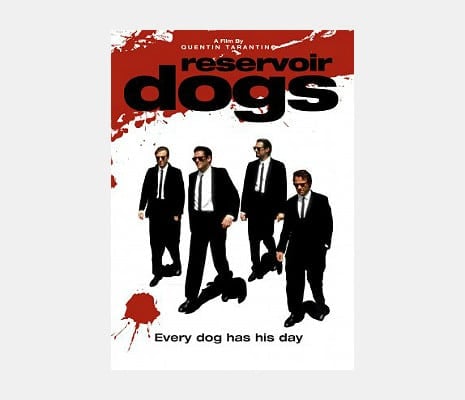
1. Reservoir Dogs (1992)
“That’s easy for your to say, you’re Mr. White. You have a cool-sounding name.”
You could call it Tarantino at his most distilled. An example of genius working within restraints. You could call it the birth of one of the most entertaining filmographies to date, the film that changed film. Or you could just call Reservoir Dogs what it is: a taut, perfected piece of crime drama, told in a bloody and blistering style with an energy that hadn’t been seen before — or since (as every subsequent attempt to match the talky coolness and aestheticized violence is just another film trying to do Reservoir Dogs).
Harvey Keitel, who helped make the movie happen by signing on as a producer, plays a diamond thief on a heist gone wrong. In a warehouse, the other guys from the job regroup to figure out just why that score fell apart so badly.
From the opening diner scene in which a bunch of criminals discuss Madonna and tipping waitresses, to the part with the ear, to the final standoff, Reservoir Dogs remains as good today on your thirtieth viewing as it did in 1992 when it redefined what a movie could do — and made you want to restart it as soon as it ended. – Amazon / iTunes
Disclosure: Clicking on these links and making a purchase may earn us a small referral fee, at no extra cost to you. Learn more here.



